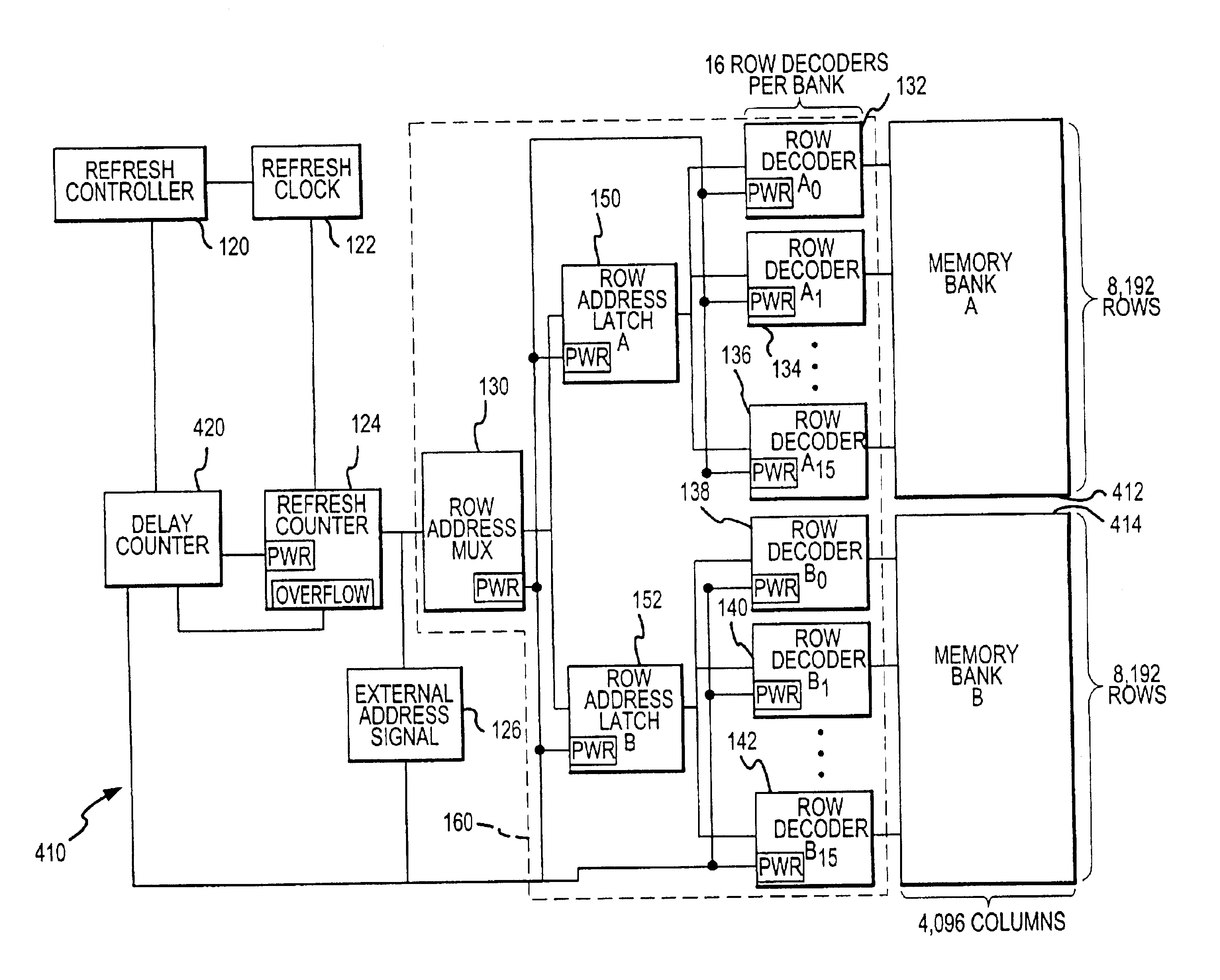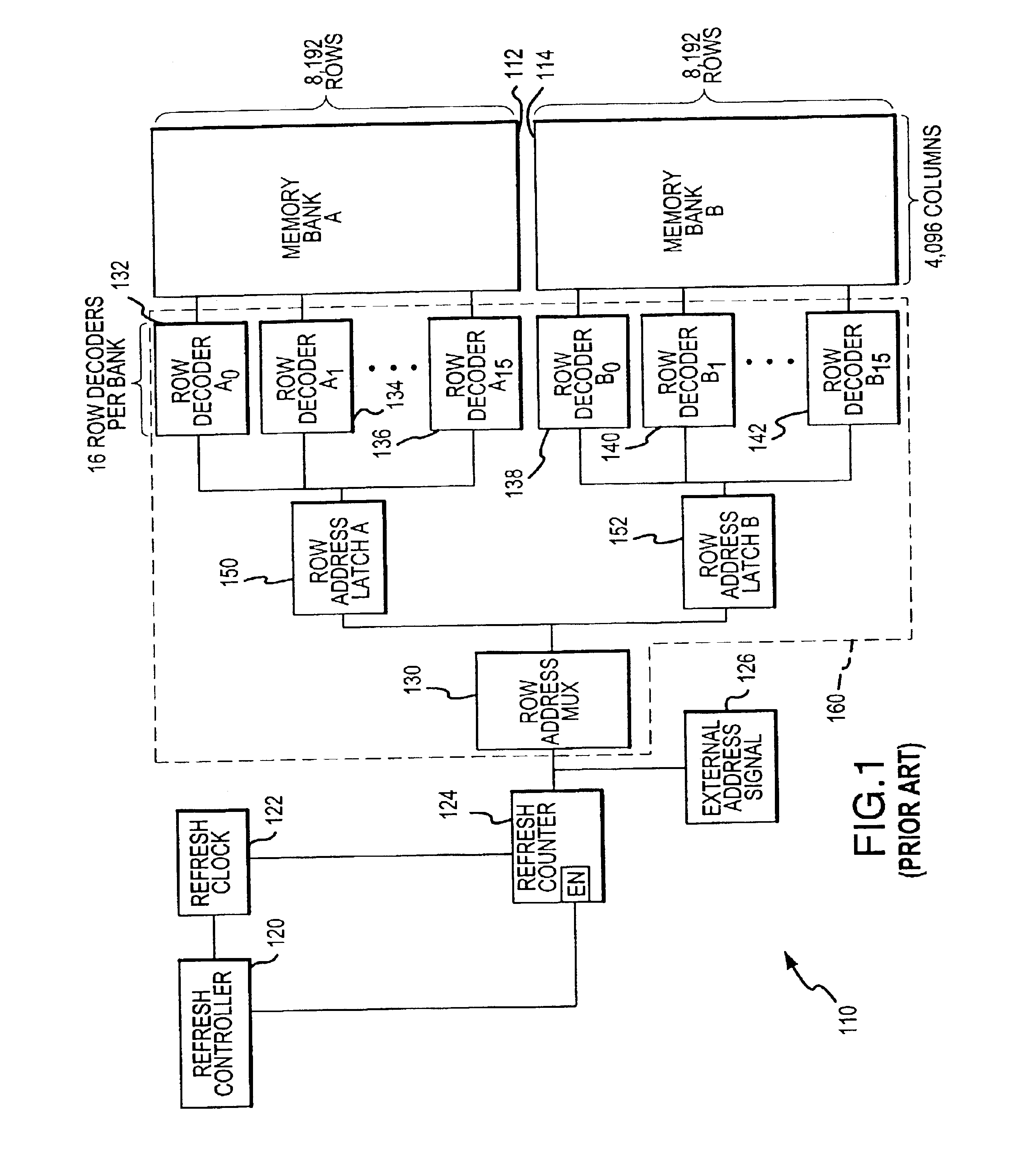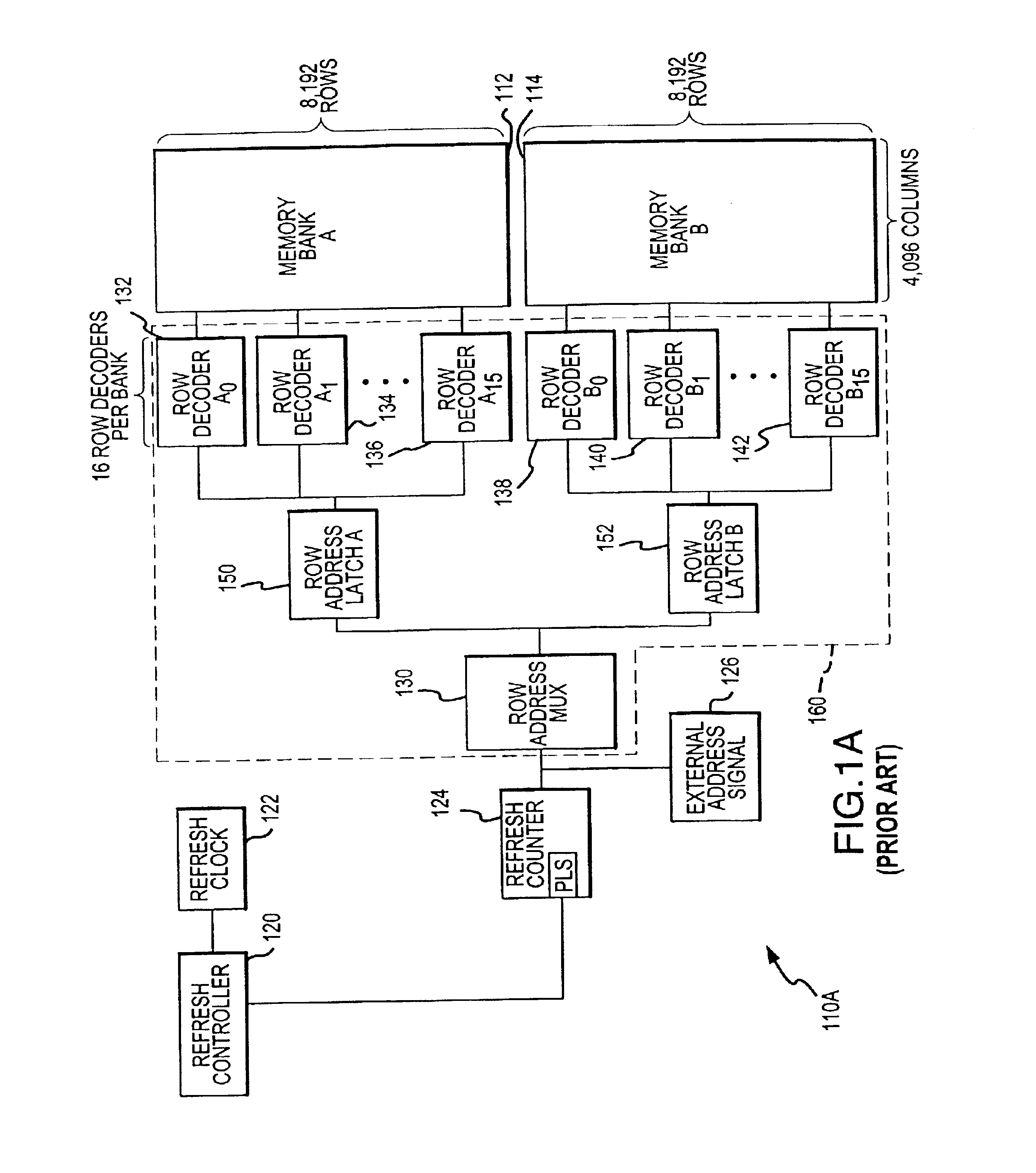System and method for power saving memory refresh for dynamic random access memory devices after an extended interval
a dynamic random access memory and power saving technology, applied in static storage, information storage, digital storage, etc., can solve the problems of constant refresh of memory cells, capacitors can hold voltage, dram devices, etc., and achieve the effect of reducing the amount of power wasted and consuming less power
- Summary
- Abstract
- Description
- Claims
- Application Information
AI Technical Summary
Benefits of technology
Problems solved by technology
Method used
Image
Examples
first embodiment
[0039]FIG. 4 depicts a memory array 410 very similar to the memory array 110 described in FIG. 1. Identical components shown in FIG. 4 have been provided with the same reference numeral, and explanation of their function and operation will not be repeated in the interest of brevity. The differences between the memory array 110 shown in FIG. 1 and the memory array 410 shown in FIG. 4 are twofold. First, the memory array 410 depicted in FIG. 4 has been adapted to use DRAM memory banks which only need to be refreshed after an extended interval 412 and 414. Second, to employ the invention and take advantage of the potential power savings afforded by the use of the DRAM memory banks which only need to be refreshed after an extended interval 412 and 414, a delay counter 420 has been added to the memory array 410. The memory array 410 shown in FIG. 4 employs burst refresh, as does memory array 110 in FIG. 1.
[0040]The delay counter 420 shown in FIG. 4 is a bit up counter which extends the i...
second embodiment
[0051]This second embodiment uses five additional control devices to control addressing of the memory array during refresh cycles, only three of which are powered on at one time when using a burst refresh mode. These additional devices allow for only six supporting devices to be activated at a time during a refresh cycle instead of thirty-five. This saves the wasteful powering and heat generation of twenty-nine superfluous devices. For a memory array eight bits in width, forty-eight devices would only need to be powered on at one time instead of two-hundred and eighty.
[0052]FIG. 6 depicts a memory array 610 very similar to the memory array 410 described in FIG. 4. PCDRAM memory banks which only need to be refreshed after an extended interval 412 and 414 still are being used, and to take advantage of their lower volatility, a delay counter 420 again is employed to extend the interval between refresh cycles. Five devices are added to the memory array 610 shown in FIG. 6: a bank segmen...
PUM
 Login to View More
Login to View More Abstract
Description
Claims
Application Information
 Login to View More
Login to View More - R&D
- Intellectual Property
- Life Sciences
- Materials
- Tech Scout
- Unparalleled Data Quality
- Higher Quality Content
- 60% Fewer Hallucinations
Browse by: Latest US Patents, China's latest patents, Technical Efficacy Thesaurus, Application Domain, Technology Topic, Popular Technical Reports.
© 2025 PatSnap. All rights reserved.Legal|Privacy policy|Modern Slavery Act Transparency Statement|Sitemap|About US| Contact US: help@patsnap.com



